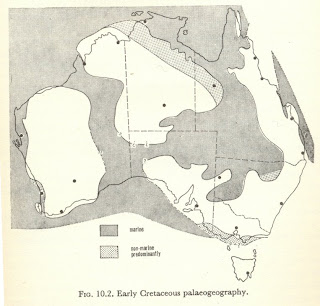
The Cretaceous period was long long ago. It extended from 140 million years ago until 65 million years ago. It was the last period of the mesozoic era, often called the 'Age of the Dinosaurs'. The end of the cretaceous was marked by a mass extinction event where many species of marine and land animals, including dinosaurs became extinct as well as the majority of land plants.
There are 5 great extinction events in the geological record and the dramatic ending of the cretaceous is the last of them. There are many theories and much controversy, which I will keep away from (at least for the moment). I will leave the last word to Tim Flannery in his book "We are the Weather Makers : The story of Global Warming"
The last time the earth was afflicted (*) was 65 million years ago, when every living thing weighing more than 35 kilograms, and the vast number of smaller species, was destroyed
(* he is talking about mass extinctions)
Aren't we humans all larger than 35 kg, I know I am!



![Wollemi Pine [Wollemia nobilius] website](http://photos1.blogger.com/x/blogger2/1930/3564/240/362820/gse_multipart1061.jpg)

